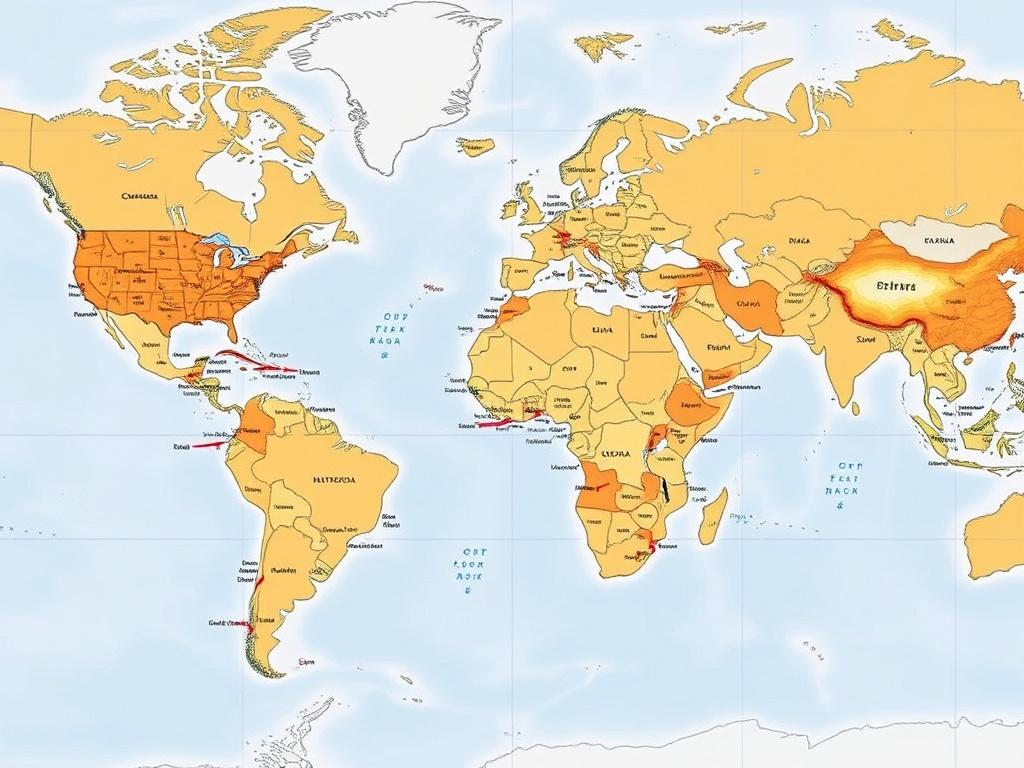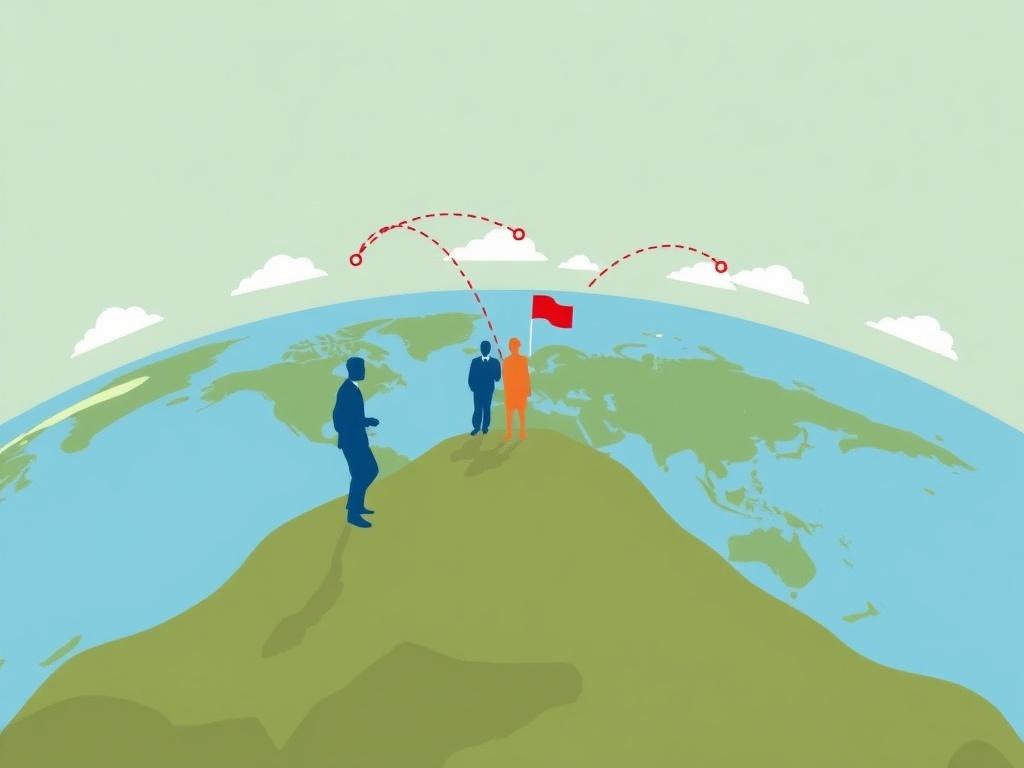Embarking on an around-the-world (RTW) trip is a dream for many travelers. The thought of exploring multiple continents, experiencing different cultures, and creating unforgettable memories is incredibly exciting. However, one of the biggest challenges when planning such an adventure is deciding how to choose your around-the-world route. There are countless factors to consider, from budget and time constraints to personal interests and seasonal weather patterns. In this article, we’ll walk you through everything you need to know to plan the perfect RTW itinerary, ensuring you make the most out of your global journey while keeping the process straightforward and enjoyable.
Understanding the Basics of Around-the-World Routes
Before we dive into specifics, it’s essential to grasp the fundamental concept of an around-the-world trip. Most RTW itineraries involve traveling in one continuous direction—either eastward or westward—to take advantage of flight deals and minimize backtracking. The idea is to circle the globe by connecting flights, cruises, or other modes of transport, seeing multiple destinations along the way.
The beauty of choosing your around-the-world route lies in the flexibility. You can create a route tailored to your interests, time, and budget. Some prefer hitting iconic cities and landmarks, while others focus on off-the-beaten-path adventures. Whatever your style, understanding the core principles will help you plan better.
Popular Approaches to Around-the-World Itineraries
Travelers typically approach RTW routes in one of three ways:
- Continent-by-continent: Visiting major continents in order, such as North America, South America, Africa, Europe, Asia, and Oceania.
- Thematic routes: Designing an itinerary based on themes, such as culinary experiences, wildlife exploration, or historical landmarks.
- Seasonal shifts: Planning your journey to follow favorable weather, ensuring you avoid monsoons, extreme winters, or scorching summers.
Each approach has its advantages and challenges. Your personal preferences will largely determine which method suits you best, but blending aspects from all three can lead to a truly unique and fulfilling trip.
Key Factors to Consider When Choosing Your Route
Creating your RTW route isn’t just about picking destinations at random. Several important factors need thoughtful consideration to craft an itinerary that’s both practical and inspiring.
1. Budget Constraints
Your budget is one of the most influential components in deciding your route. Some countries and continents are more expensive to travel in than others, and the cost of flights between certain cities can vary dramatically. For example, flying within Southeast Asia tends to be cheaper than flying between Oceania and South America.
Budget planning table for typical RTW regions
| Region | Average Daily Cost (USD) | Flight Cost From Major Hub (USD) |
|---|---|---|
| South America | 50-100 | 500-800 |
| Europe | 70-150 | 600-1,000 |
| Asia | 30-80 | 400-700 |
| Africa | 40-100 | 700-1,200 |
| Oceania | 80-200 | 900-1,500 |
When you choose your around-the-world route with budget in mind, you may decide to spend more time in affordable regions and only quick-stop in pricier ones. Planning flights and overland travel carefully can maximize your funds.
2. Time Available
The amount of time you have for your RTW adventure will shape route choices significantly. Are you taking a year off or just a few months? Longer trips allow more leisurely experiences and detours, while shorter timeframes might mean focusing on fewer continents or must-see highlights.
3. Seasonality and Weather
No traveler wants their dream trip spoiled by constant rain, unbearable heat, or extreme cold. Knowing the best seasons to visit each destination will help you pick your route wisely. For instance, the dry season in Southeast Asia varies from November to April, whereas Europe’s summer months are June through August.
4. Personal Interests and Travel Style
Are you a history buff, an adventure seeker, a foodie, or perhaps a nature lover? Your unique travel style should direct which regions and cities you include. For example, someone passionate about wildlife might prioritize African safaris, while a beach enthusiast may want to include the Maldives or the Caribbean in their RTW route.
5. Visa Requirements and Travel Restrictions
Not all countries are equally accessible to all travelers. Visa requirements, political stability, and travel advisories are real considerations when choosing your route. Research in advance which destinations require complicated visa applications or have uncertain entry rules to avoid last-minute headaches.
Step-by-Step Guide on How to Choose Your Around-the-World Route
Choosing your RTW route can feel overwhelming at first, but breaking it down into manageable steps can simplify the process and lead to a route that fits your lifestyle and travel goals perfectly.
Step 1: List the Countries and Cities You Want to Visit
Start by brainstorming your dream destinations. Think about places you’ve always wanted to see, cultural events, natural wonders, or places friends have recommended. Write them down without worrying about the order or logistics initially.
Step 2: Map the Destinations Geographically
Next, place each destination on a world map, either digitally or on paper. This visual representation helps you see which locations are close together and could be grouped logically in your route.
Step 3: Determine Your Direction of Travel
Choose to travel either eastward or westward around the globe to maximize flight deals and avoid costly backtracking. For example, if you start in North America and want to visit Europe, then Asia, and finally Australia, flying eastward makes the most sense.
Step 4: Check Weather Patterns and Seasons
Research the best times to visit your chosen destinations and try to arrange your itinerary so that you visit each place during its ideal season. This step may require rearranging your geographical order slightly.
Step 5: Consider Flight Routes and Availability
Look into common flight paths, airline hubs, and RTW flight ticket options, such as those offered by airline alliances like Star Alliance or OneWorld. See how your proposed route fits with available flights and whether you can fit major stops without doubling back.
Step 6: Calculate Costs and Adjust Accordingly
Balance your wishlist destinations with estimated travel expenses. If some areas are prohibitively expensive, consider alternative nearby destinations or shorten the time spent there.
Step 7: Finalize and Build Flexibility Into Your Plan
Confirm your route, but leave a bit of wiggle room for spontaneous changes or extended stays at favorite places. RTW travel often brings unexpected opportunities.
How Airline Alliances Can Influence Your RTW Route

Using RTW tickets from airline alliances is a common way to save money and streamline your around-the-world route. These alliances offer specially priced tickets that cover multiple flights under a set price, usually with certain rules about the direction of travel and number of stops.
Major Airline Alliances Offering RTW Travel Packages
| Alliance | Number of Member Airlines | Typical RTW Ticket Features |
|---|---|---|
| Star Alliance | 26 | Travel east or west, up to 15 flights, 29,000 miles maximum |
| OneWorld | 13 | Travel east or west, up to 16 segments, 29,000 miles maximum |
| SkyTeam | 19 | Flexible routes, up to 15 flights, journey must begin and end in same country |
When you choose your around-the-world route considering these airline RTW passes, you can bundle flights effectively, reduce costs, and simplify booking and changes.
Top Around-the-World Routes to Consider

To help you get inspired, here are some popular RTW routes, each tailored to different tastes and travel priorities.
Classic Eastward Route: North America → Europe → Asia → Oceania → South America → North America
This traditional route allows you to enjoy the highlights of each continent following the sun eastward. It’s ideal if you want a broad taste of world cultures and landscapes with relatively straightforward flights.
Adventure Route: South America → Antarctica → Africa → Asia → Oceania → South America
For travelers looking for rugged and remote destinations, combining Antarctica with South America and Africa makes for an epic adventure. Adding Asia and Oceania afterward adds cultural richness and diverse ecosystems.
Budget-Conscious Route: Southeast Asia → India → Middle East → Eastern Europe → Central America → Southeast Asia
This loop capitalizes on low-cost travel areas and affordable countries. It avoids expensive airline hubs and maximizes time in budget-friendly regions.
Useful Resources and Tools to Plan Your RTW Route
Planning your RTW itinerary is easier with the right tools. Here are several resources that can streamline the process:
- Flight Planning Tools: Apps like Skyscanner, Google Flights, and Kiwi.com help compare multi-city flight options and prices.
- RTW Airline Alliance Websites: Star Alliance, OneWorld, and SkyTeam websites offer detailed information about RTW ticket rules and sample itineraries.
- Travel Forums and Blogs: Communities like Lonely Planet’s Thorn Tree, Reddit’s r/travel, and numerous travel blogs provide real-world tips, route ideas, and latest visa info.
- Climate and Season Guides: Websites like Weather2Travel and climate-data.org give insights to help schedule your visits during ideal weather.
Tips for Staying Flexible While Following Your Around-the-World Route
Even the best-planned RTW routes can benefit from flexibility. Travel delays, unexpected events, or new opportunities may prompt changes, so having contingency plans or open tickets can be invaluable.
Here are some tips to maintain flexibility:
- Book open-jaw or multi-city tickets when possible.
- Keep some accommodation bookings flexible or opt for refundable options.
- Use travel insurance covering changes or cancellations.
- Stay informed about visa requirements that might change quickly.
Common Mistakes to Avoid When Planning Your RTW Route

Planning an around-the-world route can be complex, so beware of these common pitfalls:
- Overpacking Destinations: Trying to see too many countries in a short time results in exhaustion without truly experiencing any place.
- Ignoring Visa Rules: Failing to research visa requirements can lead to denied entry or costly processing delays.
- Not Considering Jet Lag: Constantly hopping across time zones can wear you down. Plan rest days after long flights.
- Skipping Budget Calculations: Running out of funds mid-journey due to poor budgeting is a common issue.
How to Balance Adventure and Comfort in Your RTW Route
Everyone has a different comfort threshold. Some thrive on spontaneous bus rides and dorm beds, others prefer comfort and predictability. When choosing your around-the-world route, consider mixing both approaches.
For instance, in places where long-term travel is affordable, you might choose hostels and local transport, while in remote or safety-sensitive regions, you might opt for guided tours or boutique hotels.
Sample RTW Route with Adventure and Comfort Balance
| Region | Mode of Travel | Accommodation Style |
|---|---|---|
| South America (Peru, Colombia) | Backpacking bus/trains | Budget hostels |
| Europe (Italy, France) | Flights and trains | Boutique hotels and Airbnbs |
| Asia (Thailand, Japan) | Low-cost flights and trains | Mix of hostels and mid-range hotels |
| Oceania (Australia, New Zealand) | Rental car and flights | Comfortable motels and B&Bs |
Conclusion
Choosing your around-the-world route is an exciting yet intricate process that requires balancing countless factors such as budget, time, seasons, personal interests, and logistics. By carefully considering these elements, using available resources, and combining a bit of planning with flexibility, you can craft an itinerary that turns your dream RTW trip into a smooth, unforgettable reality. Remember, there is no one-size-fits-all route—your journey should reflect your passions and preferences, allowing you to experience the world in a way that’s uniquely yours. Whether you follow a classic eastward path, embark on an adventurous loop, or tailor a budget-friendly loop, the key is to remain open to the magic of travel and the surprises the world has in store. Safe travels!









